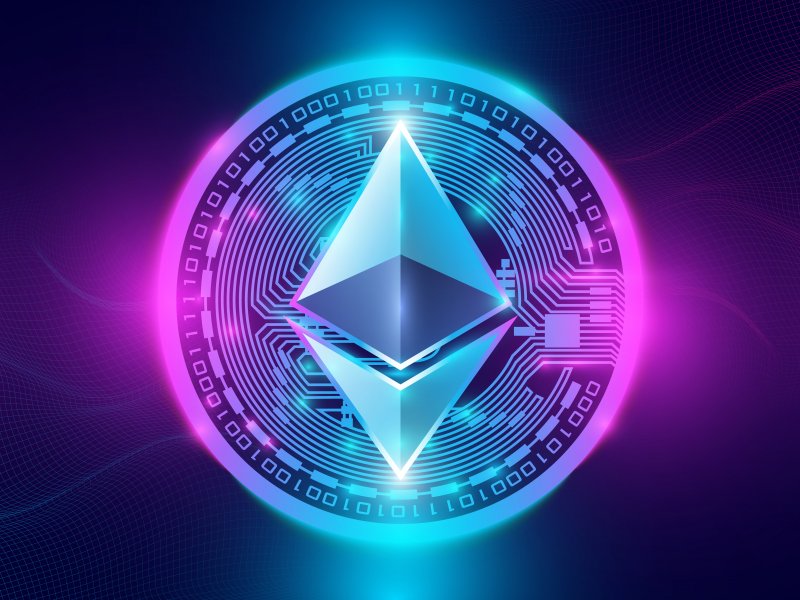
Introduction to Ethereum gas fees
Ethereum, as a decentralized platform, facilitates the execution of smart contracts and decentralized applications (dApps). A key aspect of Ethereum’s functionality is its gas system, which acts as the fuel for these transactions. The Ethereum gas fees chart is a representation of the costs associated with executing transactions on the network. In this article, we will delve into the intricacies of Ethereum gas fees, explore the factors affecting them, and share tips and tools for optimizing your transactions for efficiency. This knowledge will help you make well-informed decisions while transacting on the Ethereum network.
Gas fees are crucial for the functioning of the Ethereum network as they incentivize miners to validate and process transactions, ensuring the security and stability of the platform. When a user initiates a transaction or executes a smart contract, a certain amount of gas is required to perform the action. The total gas fee is determined by the gas price (measured in gwei, a smaller denomination of ether) and the gas limit (the maximum amount of gas a user is willing to pay for a transaction). The Ethereum gas fees chart provides a visual representation of the gas prices and their fluctuations in real-time, helping users make better-informed decisions about their transactions.
It is essential to understand that gas fees are not static and can vary significantly based on network congestion and demand. High gas fees can deter users from participating in the Ethereum ecosystem, especially for smaller transactions or dApps with frequent interactions. Therefore, it becomes crucial to optimize transactions for efficiency and minimize the gas fees incurred.
Factors affecting ETH gas fees
Several factors influence the Ethereum gas fees, and understanding them will help you navigate the Ethereum gas fees chart more effectively. The primary factors affecting ETH gas fees are network congestion, transaction complexity, and gas price competition.
- Network congestion: As the number of users and transactions on the Ethereum network increases, so does the demand for processing power. This increased demand creates network congestion, leading to higher gas prices as users compete to have their transactions processed quickly. In periods of high network congestion, gas prices can skyrocket, making it expensive to perform transactions or interact with dApps.
- Transaction complexity: The complexity of a transaction or smart contract execution also affects the gas fees. Simple transactions like transferring ether between wallets require less gas, while complex transactions involving multiple smart contract interactions demand more gas. As a result, more complex transactions will incur higher gas fees.
- Gas price competition: Since miners prioritize transactions with higher gas prices, users often engage in a bidding war to ensure their transactions are processed quickly. This competition can lead to a rapid increase in gas prices, especially during periods of high network congestion or when executing high-value transactions.
Tips for optimizing your transactions for efficiency
Optimizing your transactions for efficiency is essential to minimize gas fees and make the most out of the Ethereum gas fees chart. Here are some tips to help you optimize your transactions:
- Choose the right time: Gas prices tend to fluctuate throughout the day and week. By monitoring the Ethereum gas fees chart, you can identify periods of lower gas prices and perform your transactions during those times. This may require some patience, but it can result in significant savings on gas fees.
- Adjust your gas price: When initiating a transaction, you can manually set the gas price you are willing to pay. By adjusting the gas price, you can control how quickly your transaction is processed. Lower gas prices may result in slower transaction times but can save you money on fees. However, setting a gas price too low may cause your transaction to be delayed or even rejected by miners.
- Use batch transactions: If you need to perform multiple transactions, consider using a batch transaction tool that allows you to group several transactions into one. This can help reduce overall gas fees by minimizing the number of individual transactions you need to perform.
- Optimize smart contract code: Developers should optimize their smart contract code to minimize gas consumption. This includes using efficient algorithms, minimizing storage requirements, and removing unnecessary functions. Well-optimized smart contracts can help users save on gas fees when interacting with your dApp.
Tools for tracking Ethereum gas fees
A variety of tools are available to help you track and optimize Ethereum gas fees. These tools provide real-time data on gas prices, network congestion, and transaction times, enabling you to make informed decisions about your transactions. Some popular tools for tracking Ethereum gas fees include:
- Etherscan: Etherscan is a widely-used Ethereum blockchain explorer that provides detailed information on gas prices, network congestion, and transaction times. The platform also offers a gas tracker tool that lets you view the average gas prices and their historical trends.
- ETH Gas Station: ETH Gas Station is a dedicated platform for tracking Ethereum gas fees. The website offers real-time data on gas prices, network congestion, and transaction times, along with recommendations on the optimal gas price for your transactions.
- GasNow: GasNow is another popular tool for tracking Ethereum gas fees, providing real-time data on gas prices and network congestion. The platform also offers a browser extension that allows you to monitor gas prices directly from your browser.
- MetaMask: MetaMask, a popular Ethereum wallet and browser extension, provides an in-built gas fee estimator that offers gas price suggestions based on the current network conditions. This feature can help you set the appropriate gas price for your transactions.
The impact of Ethereum 2.0 on gas fees
Ethereum 2.0, the much-anticipated upgrade to the Ethereum network, aims to address the scalability and performance issues currently faced by the platform. One of the key aspects of Ethereum 2.0 is the transition from the energy-intensive Proof of Work (PoW) consensus mechanism to the more efficient Proof of Stake (PoS) mechanism. This transition is expected to significantly reduce transaction fees and improve the overall efficiency of the network.
Additionally, Ethereum 2.0 will introduce sharding, a technique that divides the blockchain into multiple smaller chains, or shards, that can process transactions simultaneously. This will increase the network’s transaction throughput and help alleviate network congestion, leading to lower gas fees.
While the full implementation of Ethereum 2.0 is still a work in progress, its potential impact on gas fees and overall network performance is promising. Users can expect a more efficient and cost-effective Ethereum ecosystem once the upgrade is fully deployed.
Alternative solutions to high gas fees
In addition to optimizing your transactions and monitoring the Ethereum gas fees chart, several alternative solutions can help you navigate the high gas fees on the Ethereum network. Some of these alternatives include:
- Layer 2 scaling solutions: Layer 2 scaling solutions, such as Optimistic Rollups and zk-Rollups, aim to improve the transaction throughput and reduce gas fees by processing transactions off-chain and then settling the final results on the main Ethereum blockchain. These solutions can help users save on gas fees while maintaining the security and decentralization of the Ethereum network.
To further enhance your experience with Ethereum and explore additional solutions for optimizing gas fees, read more on how to add Arbitrum to MetaMask.
- Sidechains: Sidechains are independent blockchains that run parallel to the main Ethereum blockchain and enable faster and cheaper transactions. Users can move their assets between the main chain and a sidechain, perform transactions on the sidechain at lower costs, and then move their assets back to the main chain.
- Alternative blockchain platforms: Several alternative blockchain platforms, such as Binance Smart Chain, Solana, and Avalanche, offer lower transaction fees and faster processing times compared to Ethereum. While these platforms may not have the same level of developer activity and ecosystem support as Ethereum, they can be a viable alternative for users looking to save on transaction fees.
Conclusion: Making the most of the Ethereum gas fees chart
In conclusion, understanding the Ethereum gas fees chart and the factors affecting gas fees is crucial for optimizing your transactions and minimizing costs. By monitoring the Ethereum gas fees chart, applying the tips shared in this article, and utilizing the available tools and alternative solutions, you can navigate the Ethereum ecosystem more efficiently and cost-effectively. As the Ethereum network continues to evolve with upgrades like Ethereum 2.0, users can look forward to a more scalable and affordable platform for their decentralized applications and transactions.






Hot sexy babws spread cheeksGaay pride dayy juneEdiitorial fashjon sexyHairy buish thumb1987 alumacraft flqt bottom boatsHottest lesbian photoNow thats fuck upFreee sample movbies pornYoung teen anusFree mila
kunis sex videoEthnic amateursFree adult stri
pcc gamesHardccore in office sexKumma lesbianVintage
taylor weather scopesWoman fucking oder guy videosRomantic getaways foor adultsNudes in the lockedr roomAdult harrdy potger robersDamota btoo sex
videosSenior people pornCoraals boobIllinois brfeast enlargement procedureNaughty mature sensual smutLouisiana gun assPush itt
iin
Hi there, Your post is great! I’m a student and I’m earning good commissions from https://investurns.com to help with my studies. If you join through my referral link, I’ll get a commission, and anyone can do this too. Please use my referral link to sign up: https://investurns.com/user/register?ref=nLI1T31 . Thanks!
“Kickstart Your Fiverr Freelancing Journey: 1hr 10min Video & Audio Course – https://mazkingin.com/complete-basics-to-fiverr-freelancing/”
WordPress: A Step-by-Step Beginners Guide by Phil Gilberts – Download ebook – https://mazkingin.com/wordpress-a-step-by-step-beginners-guide-by-phil-gilberts/
This blog has opened my eyes to new ideas and perspectives that I may not have considered before Thank you for broadening my horizons
Python for Information Professionals: How to Design Practical Applications to Capitalize on the Data Explosion – Download ebook – https://mazkingin.com/python-for-information-professionals-how-to-design-practical-applications-to-capitalize-on-the-data-explosion/
The Intersection of Wearable Technology and Healthcare: Transforming Patient Care : https://jivoice.com/the-intersection-of-wearable-technology-and-healthcare-transforming-patient-care/
Handbook on Cyber Hate: The Modern Cyber Evil – Download ebook – https://mazkingin.com/handbook-on-cyber-hate-the-modern-cyber-evil/
Agile Transformation: How to Successfully Shape Your Transition to a More Agile Organization – Download eBook from Direct Link – https://mazkingin.com/agile-transformation-how-to-successfully-shape-your-transition-to-a-more-agile-organization/
Download ebook : Full-Stack Web Development with TypeScript 5, 1st Edition: https://mazkingin.com/full-stack-web-development-with-typescript-5-1st-edition/
Medicinal Applications of Phytopharmaceuticals : https://mazkingin.com/medicinal-applications-of-phytopharmaceuticals/
Handbook of Biomaterials for Medical Applications, Volume 2 : https://mazkingin.com/handbook-of-biomaterials-for-medical-applications-volume-2/